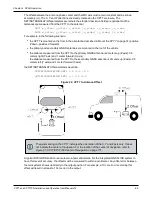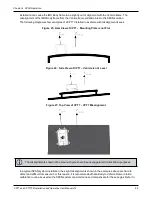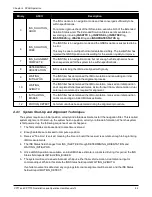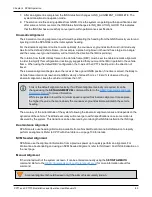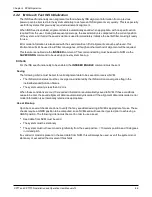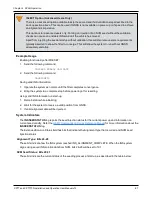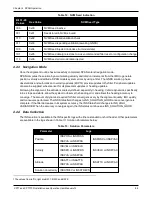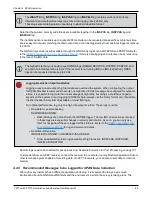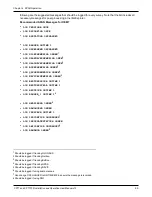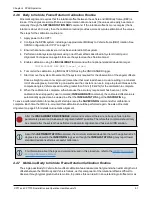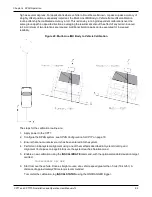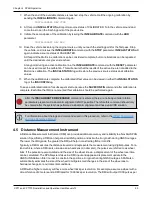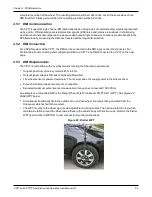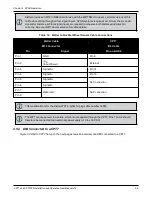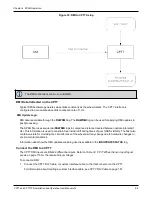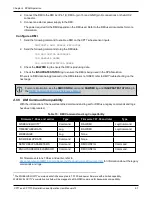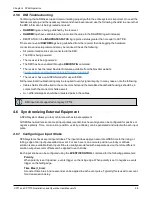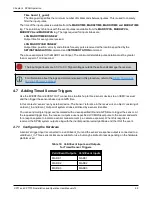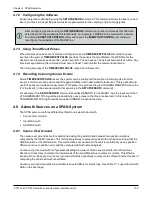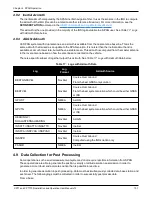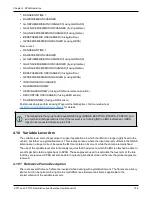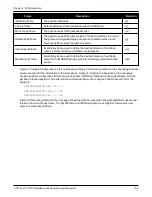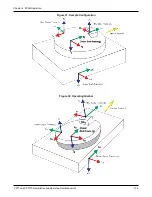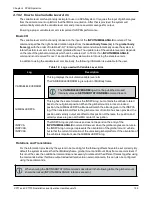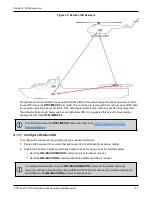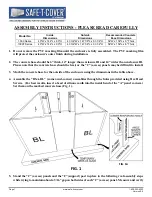
Chapter 4 SPAN Operation
CPT7 and CPT7700 Installation and Operation User Manual v12
93
7. When the end of the available distance is reached, stop the vehicle. Halt the ongoing calibration by
sending the
INSCALIBRATE
command again:
INSCALIBRATE RBV STOP
8. At this point
INSCALSTATUS
will report a source status of CALIBRATED. Turn the vehicle around and
come to a stop on the finishing point of the previous line.
9. Initiate the second pass of the calibration by issuing the
INSCALIBRATE
command with the
ADD
parameter:
INSCALIBRATE RBV ADD
10. Drive the vehicle back along the original course, until you reach the starting point for the first pass. Stop
the vehicle, and re-issue the
INSCALIBRATE
command, with the
STOP
parameter.
INSCALSTATUS
will
again indicate a source status of CALIBRATED.
At this point the Multi-Line calibration can be considered complete, but more iterations can be repeated
until the desired accuracy level is reached.
At any point during an active calibration line, the
INSCALIBRATE
command, with the
RESET
parameter
can be used to reset the calibration. This will ensure that the results of the active line are not added to the
Multi-Line calibration. The
INSCALSTATUS
log will restore the previous source status and calibration
values.
11. When the calibration is complete, the calibrated offset value can be viewed in either the
INSCALSTATUS
log or the
INSCONFIG
log.
To save a calibrated rotation for subsequent start ups, issue the
SAVECONFIG
command after calibration is
complete. Each time the IMU is re-mounted this calibration should be performed again.
After the
INSCALIBRATE RBV ENABLE
command is entered, there are no body-vehicle rotation
parameters present and a kinematic alignment is NOT possible. Therefore this command should only
be entered after the system has performed a kinematic alignment and has a valid INS solution.
For information about the logs and commands used in this procedure, refer to the
.
4.5 Distance Measurement Instrument
A Distance Measurement Instrument (DMI) can provide additional accuracy and reliability to a NovAtel SPAN
solution. Specifically, a DMI can help constrain INS position and azimuth error growth during GNSS outages.
The lower the IMU grade, the greater the DMI will help in constraining INS error drifts.
Typically, a DMI measures the distance traveled and represents the measurement using digital pulses. For a
land vehicle, where a DMI is also known as a wheel sensor (odometer), the pulses are referred to as wheel
ticks. If the pulses are accumulated and the size of the wheel known, a displacement of the wheel over time
can be calculated. The SPAN system takes in a DMI input and applies a displacement update to the
GNSS+INS Kalman filter in order to constrain the position error growth during GNSS outages. SPAN also
automatically estimates the size of the wheel to mitigate small changes in the size of the wheel due to
hardware changes or environmental conditions.
A DMI with a higher accuracy will have more wheel ticks per revolution. For example, assume a wheel with a
circumference of 2 meters and a DMI rated for 1000 ticks per revolution. The DMI will output 1000 pulses per


